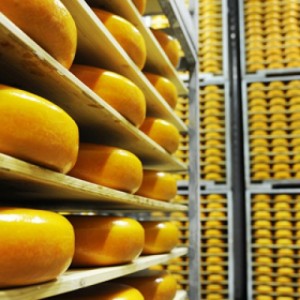 When will the “drastic” dairy markets improve? World dairy markets running 30 – 50 per cent below recent peaks can only improve, although farmers may have to wait until autumn 2015, says an industry report.
When will the “drastic” dairy markets improve? World dairy markets running 30 – 50 per cent below recent peaks can only improve, although farmers may have to wait until autumn 2015, says an industry report.
World market
Much depends on when China returns to the market, and also how the supply side fares through future weather, disease, quotas and superlevies. New Zealand production, currently nine per cent above last year, is expected to be hit by more dry weather in the New Year. Despite this, growth production growth is expected to remain at two per cent. As things stand, markets will not appreciably begin to pick up until the fourth quarter of 2015, according to Rabobank’s agribusiness analysts.
US different
Things are different in Argentina and the US, however, where prices have behaved differently. US wholesale prices lag behind overseas dynamics, and as such are forecast to slide further in the New Year. Argentina, on the other hand, despite having good pasture conditions, is producing less milk than a year ago, which has supported farmgate values. “While a supply slowdown and ongoing purchases from more price-sensitive buyers will help stabilise prices around current levels, climbing off the market floor may take some time,” said Rabobank’s latest quarterly report.
Rabobank reports
Rabobank predicts a “tighter market” by the summer as lower production next year corrects an “exceptional” 2014. High production caused 15 per cent trade growth as a means of reducing stock build-up, the report added. Meanwhile, lower farmgate prices, currently running at an average of six cents below cost of production in Germany, could serve to check farm output. In Europe, the production situation requires government intervention, with markets awash with 7.5 million tonnes more milk and fewer customers. China’s demand waned this year and then the Ukraine situation severed ties with another big market – Russia.
Milk Board
The European Milk Board travelled to Brussels recently to warn Agriculture Commissioner Phil Hogan and other major European leaders that they are “up to their necks in milk”. Board president, Romuald Schauber, threatened that more farms businesses will crumble under the pressure and insisted that the European Commission must respond with market measures. Rabobank calculates August to October 2014 world production as running almost five per cent ahead of last year, despite Argentinian output dropping 3.8 per cent in October.
Drastic situation
“The situation is drastic. We are currently truly awash with milk,” said Mr Schauber. “Supply is exceeding demand by a long chalk. Without the limiting effect of the quota system in key producing countries like Germany and Holland, the situation would be a lot worse now.” New Zealand banks and farm businesses are being advised to brace themselves for lower prices after Fonterra’s forecast milk price revision at $4.70 was announced in light of “considerable volatility. The message of Fonterra chief executive Theo Spierings was that “we are all in this together” and, like farmers, Fonterra is also having to tighten its belt.
US Outlook
Meanwhile, the US outlook is also negative, with Rabobank expecting pressure on farm margins in 2015. “However, this will likely come too late to avoid milk production growth,” the report added. The US milk herd is bigger and will yield three per cent more milk year on year in the first half of 2015. This will maintain higher year on year production seen through the last months of 2014.
Thanks to Rabobank and www.thecattlesite.com for this article.

